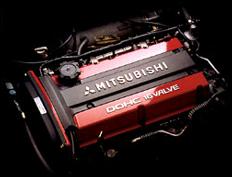Entering The Track
- From the pre-grid area, follow the directions and instructions of pre-grid personnel.
- Before entering the track, look over your shoulder for on-coming traffic. It is your responsibility to make safe entries and exits. Do not blend into the racing line until you are at race pace.
- Whether entering from the left side or right side, stay on the entry side of track until you are clear of all on coming cars.
Track Orientation (Warm up laps)
- Two to three laps are necessary to bring your car engine, brakes and tires up to temperature. Use this time to locate all flag personnel locations (generally near the turns). Identify the start/finish flag station.
- Study the track carefully. Locate the track exit leading to the pre-grid/pit area.
- Always give a raised arm signal well before exiting. Remember that the car behind you is on a race pace.
- Study all braking zones. Look for permanent landmarks, corner turn-in points and turn exit lines.
Passing / Being Passed
- Locate the passing zones. Check your mirrors for faster cars before reaching the passing zone.
- When reaching the passing zone, point to the passing side.
- If passing, look for a signal from the car you are passing and pass off line using superior corner exit speed. Do not pass under braking. If you can't complete the pass, move back in line and try again at the next passing zone.
When you lose control (and you will eventually)
- Think about the direction in which your car will go if you lose control and what you will hit. This thought should instill a measure of caution.
- When you have lost total control, turn the wheels straight ahead, apply the brakes and depress the clutch simultaneously (to keep the engine running). This will cause the car to stop in the straightest, shortest path. When the car has stopped and the dust has cleared, look for a flag person. If you are ok, extend an arm up above the roof. Wait for a signal from the flag person before re-entering the course. Report to black flag immediately for inspection.
- If your off occurs in an area where there are no course workers for assistance, wait until you have a clear track to re-enter. Cars may approach very fast. Anticipate this and give adequate room.
- If your car will not start or damage is such that it cannot be safely driven to the pits, remain in your car until you receive other instructions. Outside of a fire, the safest place on the track is in the car, helmet on, strapped in.
- Once the adrenaline has worn off, think rationally about the driving error (and it was a driving error) that precipitated the spin and discontinue the behavior. Spinning does not teach you the limits of the car.
